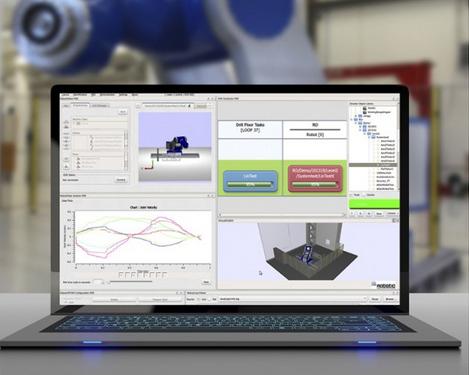
Energid launches update to robotic motion control and path planning software
Energid has released Actin 5, a significant update to its software development kit motion control software, that allows robotic system developers to focus on the robot’s task rather than joint movement and paths.
The Actin software responds in real time to sensory input and directs the robot on the most efficient path while avoiding collisions. The robot motion is updated dynamically without requiring reprogramming, even in dynamic, mission-critical environments.
It has a new robot controller development framework that is configurable through XML for application on a wide range of platforms, including real-time operating systems.
The framework’s modular design and XML configuration allows system developers to embed Actin’s advanced kinematic control capabilities into existing robotic systems with minimal programming, or to more easily develop a completely new system from proof of concept through commercial deployment.
In both cases, the company claims it can save months or years of development time over in-house programming and open source tools that can introduce security and support concerns.
“We continue to improve Actin, making it more powerful and easier to use,” said Neil Tardella, Energid CEO.
“Traditionally, developers of robotic systems would have to program many intermediate waypoints to avoid collisions with the environment and would have to hand tune paths to avoid collisions, singularities and joint limits for process-related tasks.
“But not with Actin 5, which automatically finds optimal paths in real time. Developers can focus on the tool motion and let Actin find and optimise the robot’s joint motion,” he said.
Actin 5 also adds a new EcScript scripting language to make the toolkit easier to use and faster to learn. EcScript lets developers, even with no knowledge of advanced programming languages, create powerful motion commands with just a few lines of code. Software developers can still use C++ for advanced features if desired, using the Actin 5 SDK’s improved documentation for C++ APIs.
A new human-machine interface (HMI) toolkit in Actin 5 allows developers to create touchscreen- or teach-pendant-friendly user interfaces (UIs).
The HMI toolkit is built on Qt QML for multi-platform UI development and provides access to Actin features through QML properties.
Rendering and visualisation tools are also accessible from within QML. Reference designs are available for commonly required UI features such as robot jogging controls, work-cell rendering and contextual overlays.
